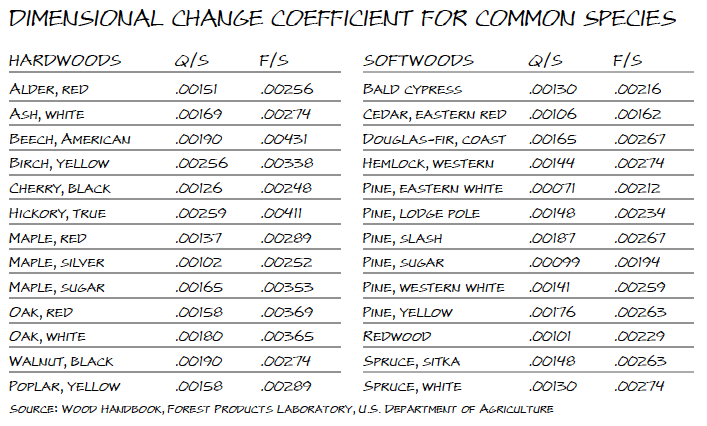Howdy All,
I have a question about what type of movement should be expected from wood once it's been sealed by, let's say, three coats of poly-urethane?
A simple example would be a bench made out of pine that's completely covered in primer, painted (for color), and then sealed with urethane. What type of movement can one expect from this piece of furniture as the years progress? I'm under the impression that sealing wood not only keeps moisture out, but also keeps it in too.
All replies from the community are appreciated. Thanks all.
-- Troy
Views: 1523
Replies to This Discussion
-
Finished projects will continue to absorb or give off moisture with changes in humidity and temperature of the surrounding air. The wood will always undergo changes in moisture content and dimension.
Wood does not move in all directions equally. The greatest movement is across the grain.
It is not possible to accurately predict the movement of a single piece of wood.
Failure to account for movement may eventually lead to cracking (shrinkage) or excessive cupping (expansion), such as in the table top.
Applying a finish.
Apply an equal number of coats to ALL surfaces to equalize the loss or gain of moisture. No finish will block moisture transfer; they just slow it down. Penetrating oils provide the least protection. Epoxy offers the greatest.
The tendency of wood to contract and expand, shrink and swell cannot be stopped. You must plan for it. Design and build with dimensional change in mind.


-
Wow! That's a pretty thorough explanation right there. Thanks Ken. I'll take what you've taught me, and use it wisely. :)
-
Hi Troy,
Thanks for your reply.
Glad you found it useful.
-
Troy
First moisture check your wood prior to finishing. The enviorment has affect on this wood while setting. Check your opitum % for the wood you are using. If all is correct you can finish. Appply equal amount of finish to all sides and faces. The time of the year, the temperature and relative humidity will affect the material. Different parts of the country have different relative humidity reanges that you should stay within ie east coast mid atlantic region 25 to 55 relative humidity. I hope this helps.
-
It does help me Charles. Appreciate your reply.
-
When purchasing wood materials, it's a good practice to allow the material to acclimate to the new conditions.
© 2025 Created by KregRep.
Powered by
![]()
Badges | Report an Issue | Privacy Policy | Terms of Service